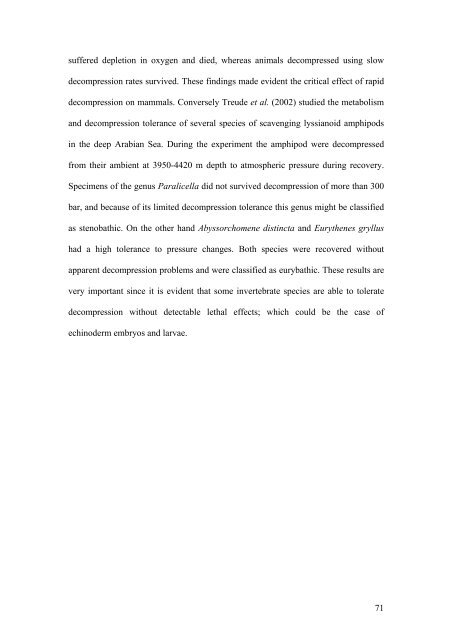Download (3398Kb) - ePrints Soton - University of Southampton
Download (3398Kb) - ePrints Soton - University of Southampton
Download (3398Kb) - ePrints Soton - University of Southampton
You also want an ePaper? Increase the reach of your titles
YUMPU automatically turns print PDFs into web optimized ePapers that Google loves.
suffered depletion in oxygen and died, whereas animals decompressed using slow<br />
decompression rates survived. These findings made evident the critical effect <strong>of</strong> rapid<br />
decompression on mammals. Conversely Treude et al. (2002) studied the metabolism<br />
and decompression tolerance <strong>of</strong> several species <strong>of</strong> scavenging lyssianoid amphipods<br />
in the deep Arabian Sea. During the experiment the amphipod were decompressed<br />
from their ambient at 3950-4420 m depth to atmospheric pressure during recovery.<br />
Specimens <strong>of</strong> the genus Paralicella did not survived decompression <strong>of</strong> more than 300<br />
bar, and because <strong>of</strong> its limited decompression tolerance this genus might be classified<br />
as stenobathic. On the other hand Abyssorchomene distincta and Eurythenes gryllus<br />
had a high tolerance to pressure changes. Both species were recovered without<br />
apparent decompression problems and were classified as eurybathic. These results are<br />
very important since it is evident that some invertebrate species are able to tolerate<br />
decompression without detectable lethal effects; which could be the case <strong>of</strong><br />
echinoderm embryos and larvae.<br />
71
















